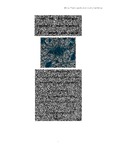- DSpace Home
- →
- Channel Islands
- →
- Academic Affairs
- →
- Masters Theses and Projects
- →
- Computer Science
JavaScript is disabled for your browser. Some features of this site may not work without it.
| dc.contributor.author | Reyhani Shahrestani, Atena | en |
| dc.date.accessioned | 2013-10-10T18:19:57Z | en |
| dc.date.available | 2013-10-10T18:19:57Z | en |
| dc.date.copyright | 2013 | en |
| dc.date.issued | 2013-10-10 | en |
| dc.identifier.uri | http://hdl.handle.net/10211.3/57093 | en |
| dc.description.abstract | This project originally started in the Computer Science department in collaboration with the Psychology department at California State University Channel Islands (CSUCI) to determine the brain's functionality in order to detect the traits of autism with the use of Emotiv EPOC Research Edition SDK. In the process of data analysis and due to the complexity of the problem and inconsistency in results, we decided to break it down, first, in order to better understand the nature of brain waves generated by emotional states, and second, to determine the features associated with EEG classification of the waves. In addition, due to consequence of problems dealing with the real-world data for Psychological purposes from Computer Science perspective, researching the possibility of dealing with data with such nature was critical. Due to the complexity of wave pattern recognition, especially EEGs signals, determining the right classification method along with a feature vector suitable for this classification is a formidable task. Therefore, the research presented in this document allows for better understanding of this kind of problems. Furthermore, it provides guidelines to selecting right features and analytical methods suitable for tackling such problems. Identifying the right feature space for brain waves for the classification of complex concepts helps with implementing both applications and devices utilizing Brain Computer Interfaces. In this project, the brain waves of a number of subjects are collected during watching videos which generate emotions such as calmness, happiness, sadness, and annoyance. The videos are selected from You Tube and they were assumed to prompt the emotions in the subjects. The selected videos showed satisfactory amount of correspondence to the emotions according to feedbacks from the subjects. Subsequently, the data are used by a machine learning algorithms to construct a pattern classifier that can recognize the emotions as four different categories; namely: positive low arousal, positive high arousal, negative low arousal, and negative high arousal emotions. A number of parameters and feature vectors are used to determine the best sets for this problem. | en |
| dc.language.iso | en_US | en |
| dc.rights | All rights reserved to author and California State University Channel Islands | en |
| dc.subject | Computer Science thesis | en |
| dc.subject | Pattern recognition systems | en |
| dc.subject | Electroencephalogram | en |
| dc.subject | EEG | en |
| dc.subject | Emotions | en |
| dc.subject | Brain computer interfaces | en |
| dc.subject | Neural networks | en |
| dc.subject | Artificial neural networks | en |
| dc.subject | Algorithms | en |
| dc.title | Brain Computer Interfaces Emotional State Detection (EEG Pattern Recognition) | en |
| dc.type | Thesis | en |
Files in this item
This item appears in the following Collection(s)
-
Computer Science [55]

